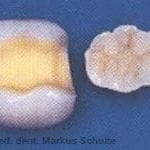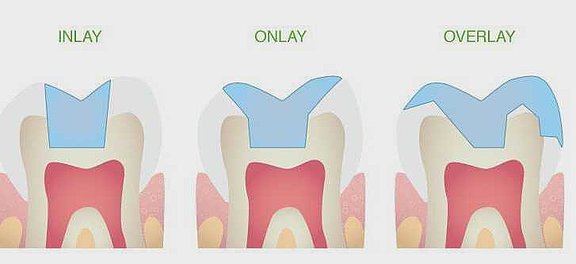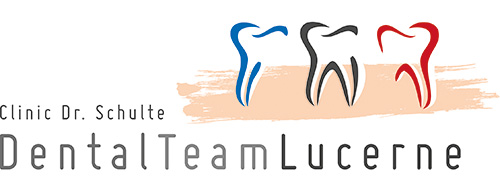Ceramic inlays, onlays and overlays


What is an inlay, onlay or overlay?
Inlays are lab-made or computer-milled inlay fillings that are used in the posterior region (on the premolars and molars). After removing the old, damaged filling or the caries, an impression of the cavity (i.e. the drilled-out defect) is taken. An insert that fills the cavity with the utmost precision and restores the original shape of the tooth is then made in the lab from ceramic (rarely from gold). This inlay filling is then bonded (cemented) into the defect in the second session. More extensive inlays that also cover the cusps of the teeth are referred to as ‘onlays’, which are basically partial crowns.
Overlays are often used to elevate the bite – e.g. in the case of tooth wear due to abrasion – when the back teeth are worn down due to abrasion and the bite has dropped. The ceramic overlays are bonded to the chewing surfaces of the teeth, and often there is no need to grind the teeth during this process.
The material of choice for inlays, onlays and overlays is high-strength ceramic, which is permanently bonded to the tooth. Gold inlays and onlays have been tried and tested for many decades and are very durable, but are rarely used nowadays for aesthetic reasons.
What are the advantages of ceramic inlays?
Ceramic inlays are metal-free and therefore translucent. They are bonded into the tooth without any gaps by means of a special adhesive procedure. A chemical bond is created between the tooth and the ceramic, restoring the original strength of even weakened teeth. The aesthetic effect is excellent due to the high level of transparency.
Ceramics are extremely biocompatible, and there are no known allergies to the likes of certain metals.
Ceramic inlays are durable. In the case of large defects, a ceramic onlay or partial crown is sometimes the better alternative to an extensive composite filling.
Can all teeth be treated with ceramic inlays?
In principle, all posterior teeth (molars and premolars) can be restored with porcelain inlays, while synthetic fillings or ceramic veneers are used for anterior teeth (incisors and canines). Only in cases where the defect (caries or old filling) reaches deep under the gum or the remaining tooth structure is extremely weak and fragile (e.g. in the case of teeth that have undergone root canal treatment) is a crown the more permanent alternative.
What are computer-milled inlays (e.g. CEREC®)?
Instead of taking an impression, here the cavity is measured with a laser scanner, and the data is fed into a computer-controlled 3D milling machine (CAD/CAM). It mills the inlay from a block of ceramic, and the ceramic inlay can be inserted in the same session. Depending on the case, this procedure can be used instead of conventional, lab-made inlays.
A treatment case from our practice

Figure 1
Three defective amalgam fillings (one premolar and two molars)
Figure 2
The teeth are completely isolated from the oral cavity by placing elasticated rubber (a rubber dam) over them. After painlessly putting the patient under anaesthetic with the Peripress procedure, the amalgam is removed using water cooling and completely aspirated. Patient exposure to heavy metal abrasion and mercury is ruled out with this procedure.
Figure 3
As the defect in the premolar is not as deep, it is restored with a tooth-coloured composite filling. The two molars have already been prepared for ceramic inlays.
Figure 4
The impression is taken here with a small, one-sided impression tray, without covering the palate. The upper and lower teeth are precisely moulded at the same time, and there is no need for additional bite registration. Unlike normal impression trays, this does not cause gagging or nausea.
Figure 5
The finished ceramic inlays before insertion.
Figure 6
After adhesive placement of the ceramic inlays. The aesthetics, function and stability of the treated teeth are permanently restored.
How much does a ceramic inlay cost?
You should normally expect to pay between CHF 1,600 and CHF 2,000 for a ceramic inlay or a partial crown.
Would you like to convert CHF (Swiss francs) to EUR (euros)? Use the online currency converter.

